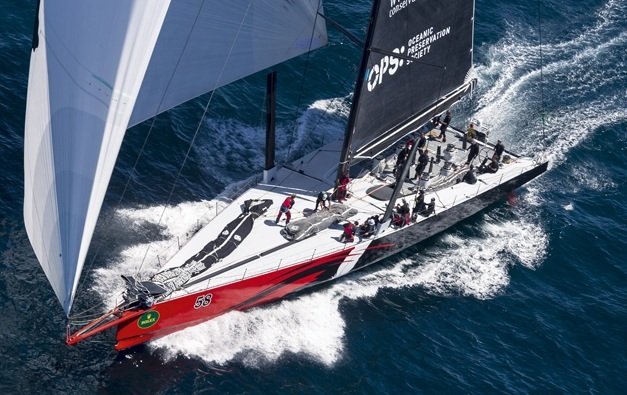I appreciate everyone's comment and thoughts on this topic. I have a great interest in the semi-displacement/super-displacement/semi-planing space as that is where I like to boat, and have for a long time. Full displacement speeds are both not practical in my area (7 knots bucking a 3-4 knot adverse current in Buzzard's Bay or the Cape Cod Canal means less than walking speed).
More importantly, full displacement speed would result in my single-handing most of the time. When we've experimentally tried going at 7-8 knots, within 15 minutes the Admiral declares, 'speed up, I can't take it anymore!'. I love the idea of being able to cruise in the low-mid teens, but with better ability to handle nasty sea conditions than a typical flat-bottom full planing hull (I strayed and ventured down the dark side of the path with a full planing boat about 15 years ago, and regretted it).
Approaching this as mom and pop cruisers there’s one major downside and it’s not rolling. Rather there’s very limited capacity for payload. Same issue as with efficient multi hulls. Look at the Tenant designs and compare with Leishman’s. Then think about payload. For dollar spent and operating cost boats of equal size favors the standard FD hull capacity for useful payload. The FD hull will absorb additional weight with little complaint or change in performance. Payload is a big deal. If you don’t think so watch Carlin’s routine about “my stuff and your sh-t”.
Therein lies the rub. People like big, spacious cabins. So many builders and dealers have joked about the 'wow' factor to impress Admirals at boat shows (it's happened to us...). This has led to ever beamier designs and full-width cabins at the expense of walk-around decks. It's in our cultural nature - bigger is better, and we like boat spaces that feel like a house.
However... diesel fuel prices north of $6/gal are with us, and will likely stay with us for the foreseeable future (probably as long as Putin is alive and the West boycotts Russian oil). The truly wealthy are immune from such pedestrian things as fuel prices and it won't stop super-yachts. But for most of the rest of us, I wonder if over time as the reality of fuel prices and the realization that we're not likely to see sub-$3/gal fuel in our lifetimes sets in, if there might be renewed interest in the classic pre-war designs Hippocampus refers to. Lean, narrow hulls that can exceed displacement speeds and cruise in the teens on modest power, the way boats were designed and performed in the days before high-power engines.
Few like this are offered now, because the tradeoff is (as you described) less interior space and carrying capacity. We would have to get used to smaller spaces and carrying less stuff.
Adreyale of France builds a few models like this. I think they're absolutely gorgeous. There only seem to be a handful in the U.S., which pop up for sale periodically.
https://www.tofinou.com/en/motor-yachts/andreyale-15-m
Sam Devlin recently offered a similar design, I don't know if any have actually been built.
https://devlinboat.com/blue-fin-48/
And then there was the Camano hull, which cracked the code to eliminate a bow wave that needed power to get over and onto plane. Creating a smooth curve on the fuel burn to speeds well above hull speed. They did this by taking some hull volume off of the bow sections and adding to the belly of the boat against the keel, creating lift there. The downside becoming skittish and "squirrely" and unstable at about 15 knots, probably from excessive lift at higher speeds. I've been surprised the concept has not been adapted and refined.
I've wondered the same as well. Why haven't more builders adopted the Camano hull design? Any patents would seem to have long expired. It seemed like the perfect compromise of being able to cruise in the low teens, beyond 'displacement' speeds, but without sacrificing interior space or carrying capacity. For my own personal desires it's perfect. Over the years I've chased the few Camano and Bracewell 41's that come on the market, but the few in existence seem to be mostly on the wrong coast (I tried buying the only east coast Camano 41 I ever saw; it was initially listed years ago for $399k, which at the time I thought was too high. I offered $325k which the broker scoffed at. To my knowledge it was for sale on and off for 6 years, and I believe ultimately sold for $225k).

